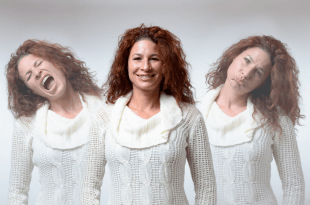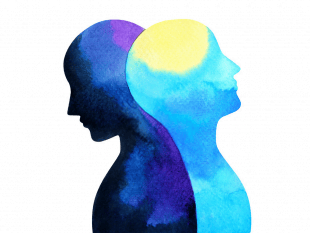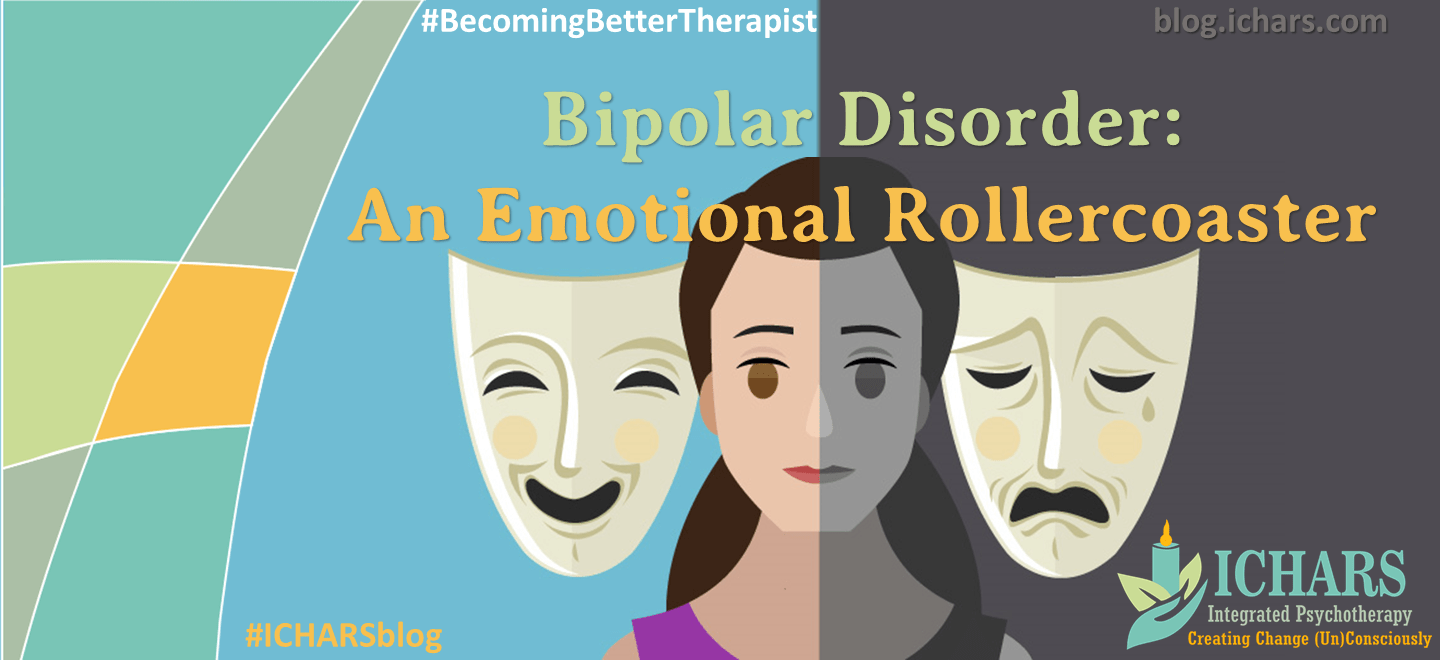Introduction
In this post we would focus on Bipolar Disorder: what is it, its types and its treatment
Everyone experiences ‘mood swings’ once in a while. But for some of us, these ‘swings’ go beyond acceptable or normal behavior and become a full-blown mood disorder.
What is Mood Disorder?

To understand what a mood disorder is, let’s first define the different kinds of moods one can experience on a continuum.
- On one end of this scale, we have the dysphoria which is marked by an unusually elevated amount of sadness. When a person persistently experiences emotional disturbance on this end of the continuum, they may qualify for a diagnosis of clinical depression.
- Moving towards the centre of this scale is the balanced mood called euthymia that most of us, without a psychologically relevant diagnosis, experience for most of the time. Sure, we may occasionally tip over either side of this balance but mostly, we stay in the centre, feeling neither too sad nor too happy.
- Now to the opposite extreme is euphoria in which a person goes much beyond being simply cheerful to almost ecstatic. In euphoria, a person typically loses track of his/her insight and judgement that often turns their high into sorry consequences. The emotional disturbance that is predominantly experienced at this end of the spectrum may result in mania and hypomania.
Bipolar disorder, which was earlier referred to as manic depression, is a mood disorder marked by the presence of manic episodes i.e. exaggerated arousal state that can be highly disruptive; with the possibility of alternations with major depressive episodes.
A person with bipolar disorder often vacillates between the euphoric and the dysphoric states but simply the presence of mania is often enough to roll out the diagnosis.
Criteria for a manic episode
A person is said to have met the criteria for a manic episode when s/he persistently and abnormally shows an elevated and irritable mood, along with a rush of energy for most of the time every day of a week.
Such a state of hyper arousal state might may occasionally require hospitalization. Some other signs that indicate mania are:
- An inflated sense of self — feeling as if one is larger than life
- Decreased need for sleep such that one feels rested even after just 3 hours of rest
- Talkative to the extent that one almost feels as if they are under immense pressure to not shut up
- Having too many ideas occurring all at once
- Distractibility
- Constant need to pursue some activity either socially, at work or sexually
- Engagement in risky behavior such as rash driving, unrestrained sexual activity or foolish business decisions
When the mood is not as heightened as in the manic state and the above given symptoms are present for 4 consecutive days instead of a week, without ever requiring hospitalization, one may be said to have experienced hypomania – a state between euthymia and euphoria.
Types of Bipolar Disorder
There are two types of Bipolar Disorder: Bipolar I and Bipolar II.
- Bipolar I disorder follows a clinical course in which a person has experienced one or more manic episodes but might or might not experience a major depressive episode.
- On the flipside, Bipolar II is the diagnosis assigned when a person has already experienced one or more major depressive episodes and has met the criteria for hypomania at least once.

Interestingly, some clients while experiencing a manic, hypomanic or major depressive episode may actually report symptoms from the opposite mood pole. For instance, a lady in the manic phase may report feeling suicidal. In such cases, according to the Diagnostic and Statistical Manual for mental disorders 5 (DSM-5), a specifier of ‘mixed features’ must be used.
Some individuals ailing from this disorder might show mood variations very frequently. When a person reports the presence of manic, hypomanic or depressive episode for more than 4 times in the same year, they might be classified by their clinician as having bipolar, rapid cycling diagnosis.
For some people this cycling of mood may actually occur within the same week or even the same day. From waking up feeling blue and wishing to die, they might resist going to bed for 3 days straight feeling extensively worked up!
Problems with Diagnosis of Bipolar Disorder
There are several diagnoses that often get muddled with bipolar disorder. Very often, it becomes difficult to pinpoint whether the distractibility shown by an 8-year-old can be attributed to Attention Deficit Hyperactivity Disorder, Disruptive Mood Dysregulation Disorder or Bipolar Disorder.
Similarly, sometimes individuals with Bipolar disorder also show psychotic symptoms like delusions and hallucinations. For example, a person having a manic episode might not only feel extremely ‘lively’ but may also believe that he is a grand musician with a large fan following.
However, when psychoticism co-occurs with mood disruption, the condition is labeled as Schizoaffective Disorder.
Additional Considerations for Bipolar Disorder
Research has shown support for genetic inheritance patterns of bipolar disorder along with abnormalities in brain regions involved in impulse control.
People with bipolar disorder often have trouble with substance abuse. They may use drugs and alcohol to medicate themselves out of their gloom or continue feeling on the edge. However, this increases their chances of breaking the law and face troublesome consequences for the same.
As a result of constantly living under pressure, they become prone to develop anxiety and stress related issues. They often exhibit early onset of bipolarity, more frequent mood shifts and aggression to the point of self-harm.
Therapists Niche: Treatment for Bipolar Disorder
Traditionally, the treatment of bipolar disorder involves the use of lithium-based medication over an extended timeline. However, the side effects of such prolonged use discourage many to stick by the medical recommendations.
Hence, psycho education, family therapy and other psycho-therapeutic techniques are often an integral part of the treatment program so as to help the client and their close ones clearly understand the ‘know how’ of this condition.
Sometimes, antidepressants may be prescribed for a depressive episode but it might trigger mania in some especially vulnerable individuals and so other less reactive medications must be preferred.
Since bipolar disorder has a large brain chemical imbalance component, any treatment for the same must be led by a trained psychiatrist. Being a recurrent illness, long-term continuous preventive treatment is strongly recommended and almost always indicated. A strategy that combines medication and psycho-therapeutic treatment is optimal for managing the disorder over time.
Guidelines For Psychotherapists working with Bipolar Disorder
- From a purely Freudian perspective, mania correlates to the unconscious use of denial and narcissistic defense mechanisms. Working with these defense mechanisms is one area where psychotherapy treatment can help.
- Since disruption in the sleep-wake cycle of the body accelerates the worsening of this condition, this is another area that psychotherapy treatment can focus on.
- Psycho Education and family therapy can be used to bring about stability in the client’s routine as possible because even the most minor change in the client’s environment may trigger a stressful bodily response. Certain Psychotherapeutic techniques can help the client learn to handle these changes in environment more effectively.
- Psychotherapy (especially CBT + Hypnosis) can also help people with bipolar disorder learn to change inappropriate or negative thought patterns and behaviors associated with the illness.
- Hypnotherapy can help people with bipolar disorder both to improve interpersonal relationships and to regulate daily routines. Maintaining a daily routine and sleep schedule may help protect against manic episodes.
If you are a mental health practitioner and would like to develop advanced therapeutic skills do check out our comprehensive course on Cognitive Hypnotic Psychotherapy™ that is based on the integration of cognitive, behavioural and psycho-dynamic approaches with techniques from Clinical Hypnosis, Neuro Linguistic Programming, Mindfulness and Metaphor therapy.
Special note for practitioners of hypnotherapy
- Though hypnotherapy can be very useful in complementing psychiatric treatment, it is important to know which technique in hypnosis can be used and which should not be used with clients having bipolar disorder.
- Regression and other similar processes that focus on working with past experiences must be avoided at least in the initial phase of the therapy. Even in later phases these techniques should only be used after proper consultation with a psychiatrist (who preferably understands these techniques and their effects).
- Light hypnosis with positive suggestions and hypnotic techniques for thought restructuring can be used effectively. Skillful application of “Conversational Hypnosis” can help in creating rapport and enhancing receptiveness in the client.
For people with Bipolar Disorder and their family members
Before choosing a therapist that you would like to work with, kindly do a background check on the skill set and the qualifications of the therapist. Often the difference between a speedy recovery and the worsening of a problem is not just the psycho-therapeutic approach but more importantly the skills with which the therapist uses that approach. Also, psychotherapy is not supposed to be used as a replacement to psychiatric treatment but must work in combination with the same.

